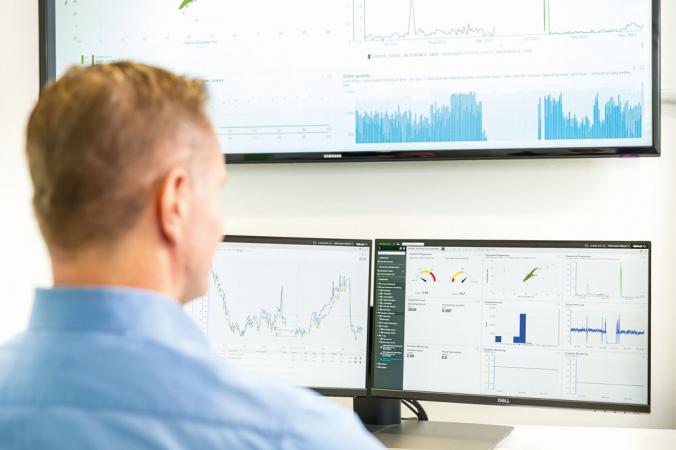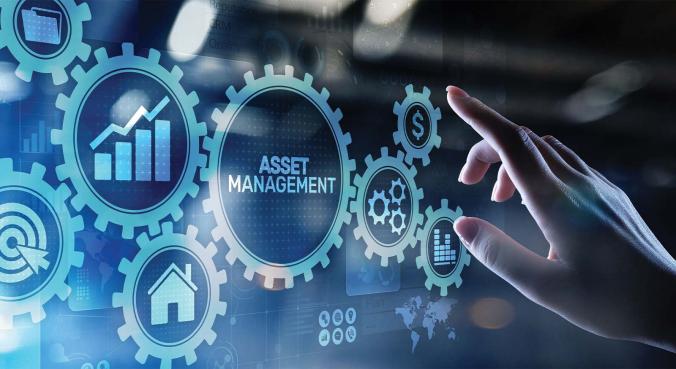Industry 4.0 Knocking on Your Front Door
Increasing efficiency, faster work execution, smaller error rates, the right information immediately available on the right spot, a shorter learning curve of new employees… Aren’t we all facing these challenges in industry today?
Today, every industrial company is challenged by the demand to lower production costs. For years maintenance departments have needed to do more with less. This results in an increasing pressure weighing on the shoulders of every individual maintenance technician.
As if this is not enough, we will be faced with another challenge in the near future when the baby boom generation, our current technical experts, will leave the labour market. Maintenance Managers are already aware of the fact that they will not easily be replaced. The result is an increasing amount of less technically skilled people in maintenance departments.
These less skilled technicians are confronted with a decreasing need of equipment standardization, mostly for reasons of cost effectiveness. Less standardization results in less repetitive work, more diversity in task execution and more different work instructions. This leads to the simple fact that technicians need to remember more. Needless to say, efficiency will suffer and more errors will be made.
Augmented and Mixed Reality
Industry 4.0 is knocking on the front door of our industrial companies, or is in some cases already well settled in the daily processes. Augmented Reality is one of the technologies that can be classified under the heading of Industry 4.0.
Augmented Reality is the technology of taking in real time the view of the real world and adding digital information on top of it. The digital information can exist of simple brief text notifications, videos and even full 3D images.
The technology of Mixed Reality goes one step further and anchors all virtual elements to a specific point in the real world.
For making this possible a sensor-packed wearable device is needed, such as a tablet or smartphone, smart glasses or a smart helmet. A strong evolution is going on in the market of smart devices because of the efforts of big technology companies, such as Microsoft, Google, Apple and a few promising technology start-ups, such as ODG and Magic Leap. This leads to the increasing success of Augmented and Mixed Reality in different fields of use.
Industrial Applications
Industry is one of the domains where Augmented and Mixed Reality can have a huge added value. Virtual elements anchored to the real world can offer advantages in training new technicians and supporting technicians in their daily work. For example, you can train a relatively inexperienced technician in replacing the mechanical seal of a centrifugal pump by a step by step digital work instruction where the right virtual tool (screwdriver, socket wrench…) will be placed on the right real world screw or bolt. This will increase the learning curve of new employees and reduce the risks related to less technically skilled and experienced technicians performing dangerous tasks in the field.
The same technique can also be used to support an experienced technician in performing a task he or she doesn’t normally perform often. Or you can support a technician in solving the cause of a failure by providing him or her with a failure-solving algorithm where the addition of virtual elements will guide them through the problem solving process. Even running a simple checklist with the real world being augmented by virtual elements gives a lot of advantages in reducing execution time and lowering the error rates made by technicians.
At the same time it is possible to provide the necessary safety measurements to the technician as well as every other digitally available data, such as plans and schemes, manuals, spare parts information and equipment status information.
The resulting advantage of this ‘digital companion’ brings us one step closer to the necessary gain in efficiency which industrial companies are looking for today.
BEMAS Innovation Award
The advantages of Augmented and Mixed Reality as well as the level of innovation have been acknowledged by the jury of the Innovation Award organized by the Belgian Maintenance Association (BEMAS). In April this year, Viu More won this award with their Augmented Reality applications for industry. Other finalists were Allied Reliability Group with their AR-C10 ‘Bridge to better condition monitoring’ and Prüftechnik with their Rotalign Touch application for user-friendly laser alignment.
The jury recognised how the broad field of application and easy accessibility of the innovation addressed a very relevant issue for our industrial companies.
The Future and Beyond
Augmented and Mixed Reality will definitely be a big part of our future. Not only in industry, but also in the consumer market both technologies are on the verge of breakthrough. Companies such as IKEA, L’Oréal and BMW already use Augmented Reality applications in their marketing, sales and after-sales process.
Although today a lot is already possible with Augmented and Mixed Reality in industry, there are also still a lot of opportunities. Evolutions on smart devices specifically designed for industrial applications have just begun. In addition, a lot of research is running in the field of more robust recognition and tracking algorithms. This is necessary to make more robust software that can work independently of the work environment and weather conditions. After all, we are dealing here with computer and machine vision that we want to perform the same tasks as our own eyes and brains. And we all know that our eyes and brain both are complex pieces of nature.
The field of gesture recognition is also an emerging research field. With gesture recognition we can guard the maintenance technician and operator in their task execution and warn them when they make a mistake or an error. Or you can use gestures to call new menu items, slide between different plans, pick a specific equipment form the plan, zoom in and study it in detail.
Fans of Steven Spielberg’s ‘Minority Report’, the movie with Tom Cruise taking the leading role probably will see some similarities. Who knows, within a few years, all our maintenance technicians and operators will make use of the same tools Tom Cruise has in this wonderful movie.
Payback Period
New technologies often suffer from the perception that they are expensive, and that large investment budgets are needed. Sometimes this is true, but in many cases the Return on Investment (ROI) justifies the initial investment.
The level of efficiency increase when using Augmented and Mixed Reality applications is that large that a pay back period can be reached in a period of 3 to 9 months depending on the application.
There are also some benefits that are difficult to insert in the calculation of the ROI and pay back period. For example savings from a safer task execution and savings due to a decreasing cost of damaged equipment and production losses caused by execution errors. Also the decreasing risk on image damage due to HSE issues and production losses caused by execution errors is not easy to calculate.
Augmented and Mixed Reality is knocking at the front door of our industrial companies and because of its potential nobody can stop it. So, remember: “The early bird/adopter catches the worm”.
The Viu More AR BizCard Experience can be downloaded in the Google Play Store . There is also a link available in the Google Play Store where you can download our business card. (Only available for Android devices)














